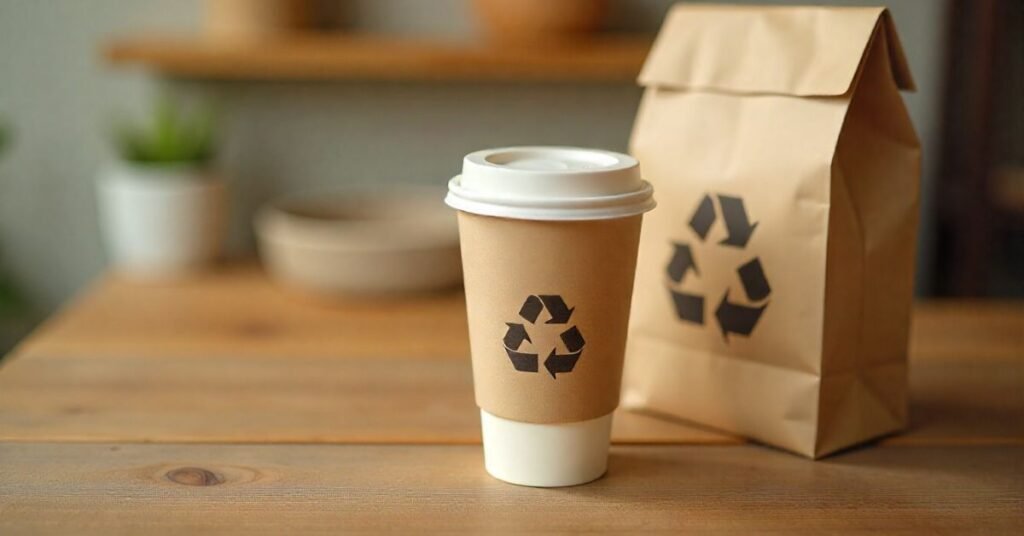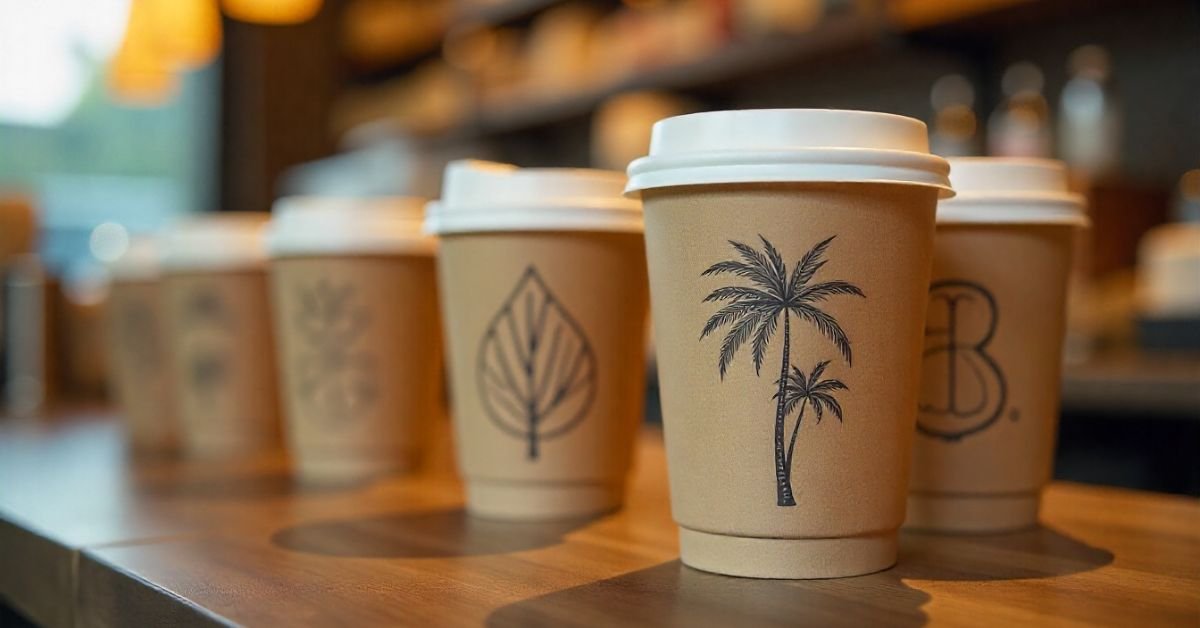Introduction
In today’s competitive business environment, success often lies in the smallest details right down to the lid on a coffee cup. The pappedeckel, a German term that merges “Pappe” (cardboard) and “Deckel” (lid), is quickly emerging as a smart, sustainable, and strategic component in modern packaging design. Though simple in form, this flat cardboard lid offers tremendous potential for American businesses looking to reduce plastic waste, enhance customer experience, and create meaningful brand interactions.
As consumers demand eco-friendly solutions and regulators tighten packaging laws, companies across the U.S. from local cafés to large-scale food distributors are rethinking traditional approaches. The Pappedeckel presents a practical and brandable solution that aligns with 2025’s top packaging trends: sustainability, simplicity, and storytelling. This article explores how these lids are becoming an unexpected yet powerful tool in the business world, offering insights into market trends, cost implications, legal considerations, and more.
What Is a Pappedeckel, and Why Does It Matter?
In simple terms, a Pappdeckel is a flat, usually round, piece of cardboard used as a lid on food or beverage containers. Far from being just a coffee cup cover, this small detail is a smart business tool that serves
- Heat retention and spill prevention
- Eco-conscious packaging goals
- Brand visibility and product messaging
The brilliance behind switching to a cardboard lid lies in its multi-functionality: it’s light, printable, recyclable, and aligns with ESG (Environmental, Social, and Governance) expectations. U.S. businesses are now embracing this German-born concept for its practicality and potential in marketing.
U.S. Market Trends Driving the Rise of Eco Packaging
Consumer trends in the post-pandemic retail and food service landscape have shifted drastically. People today want sustainable, minimal, and responsible products and packaging is on top of that list.
2025 Data Snapshot
According to the Sustainable Packaging Alliance (SPA, 2025)
- 73% of U.S. consumers consider packaging sustainability before purchasing.
- Businesses using eco-packaging saw an average 21% increase in brand perception.
Why this matters:
- Quick-service restaurants are scaling back on plastic.
- Coffee chains are replacing plastic lids with biodegradable or compostable materials.
- Retail brands are seeking low-impact, high-visibility packaging methods.
Cardboard lids fit perfectly where eco trends meet user expectations: simple, smart, and sustainable.
The Sustainability Advantage
Let’s compare the environmental impact of plastic vs. cardboard lids using current lifecycle assessment data.
Table 1: Environmental Comparison Plastic vs. Cardboard Lids (2025)
| Feature | Plastic Lid (PET/PP) | Cardboard Lid (Pappedeckel) |
| Biodegradability | No | Yes (In 60–90 days) |
| Recyclability | Limited | Widely recyclable |
| CO₂ Emissions (per 1000 pcs) | ~5.8 kg | ~2.2 kg |
| Decomposition Time | 400+ years | 2–3 months |
| Custom Branding Formats | Limited | High flexibility |
| Cost per Unit (avg.) | $0.04 | $0.045 |
Branding Potential
In a cluttered digital marketing world, physical brand visibility matters. Every product touchpoint is an opportunity and lids are a blank canvas.
Use cases for printed Pappedeckel lids
- Logo and brand identifiers
- Product promotions (QR codes)
- Awareness or sustainability messages
- Seasonal campaigns
Case Example
A small Michigan coffee shop increased Instagram engagement by 32% after switching to artfully printed cardboard lids encouraging users to scan for rewards.
Visual Comparison: Branded Lid vs. Plain Lid
| Feature | Plain Lid | Branded Pappedeckel |
| Brand Recall | Low | High |
| Social Media Impact | Minimal | Shareable Value |
| Upsell Opportunity | None | Embedded QR Codes |
In short, every lid becomes a moment of brand storytelling.
Cost Analysis
Cost concerns are often the biggest hurdle for U.S. businesses considering sustainable materials.
Here’s how it plays out
- Plastic Lid (PET): ~$0.04 per unit
- Cardboard Lid: ~$0.045 to $0.06 depending on design and order size
- Savings in waste disposal & compliance can offset the initial cost.
Long-Term ROI Factors
- Reduced plastic tax burdens (now active in multiple U.S. states)
- Improved customer retention due to values alignment
- Opportunities for monetizing lid space via co-branding
Industries Adopting Cardboard Lids in 2025
Beyond coffee shops, the cardboard lid trend is spreading across sectors
Top Adopters
- Food & Beverage (cafés, juice bars, organic grocers)
- Catering & Events (biodegradable serving setups)
- Healthcare & Pharmaceuticals (sanitary, disposable packaging)
- Retail & Gifting (premium biodegradable wraps)
Emerging Markets
- Subscription boxes for drink samplers
- Pre-packed meal services
- Airlines and travel catering kits
Each of these sectors demands sustainability and presentation, and cardboard lids offer both.
Supply Chain & Manufacturing Insights in the U.S.
In 2025, local sourcing and domestic manufacturing of cardboard packaging have expanded to meet demand.
Trends
- U.S.-based manufacturers offering shorter lead times and lower shipping costs
- Digital printing allows custom designs in small batches.
- FSC-certified materials become increasingly standard.
Manufacturing Tip: Partner with suppliers using water-based adhesives and non-toxic inks to stay compliant with environmental regulations.
Eco Compliance & Legal Regulations to Know
The U.S. is gradually tightening packaging regulations to reduce landfill impact.
Regulatory Landscape in 2025
- California’s SB 54 Plastic Pollution Producer Responsibility Act encourages alternatives to single-use plastics.
- NY, WA, and CO have bans/taxes on plastic packaging.
- Many large retailers now require suppliers to meet recyclability or compostability thresholds.
Cardboard packaging aligns with all major upcoming laws, reducing risk for businesses in regulated states.
U.S. Consumer Behavior
Understanding how consumers view eco-packaging in real-life usage is crucial.
- 41% are more likely to choose cafes with eco lids over plastic.
- 29% say recycled packaging increases their trust in a brand.
- 53% of millennials will pay up to 10% more for sustainable packaging.
Insight: Eco-lids are not just the future they are today’s influence tool.
Action Steps for Businesses Ready to Switch
Making the transition to cardboard lids can be smooth with proper planning.
Checklist for Smooth Adoption
- Audit your current lid/paper usage and waste output.
- Run ROI scenarios for switching to Pappedeckel-style lids
- Consult with eco-packaging specialists in the U.S.
- Test a small branded batch to gauge customer feedback
- Transition in stages: start with flagship locations or new product lines
Bonus Tools
- Canva for the lid design
- Moo.com (custom print packs for lids)
- Green Packaging suppliers directory
FAQs
What materials are used in Pappedeckel lids?
The primary material used in Pappedeckel lids is recycled cardboard, which is then coated or laminated with food-safe materials.
Are cardboard lids safe for hot drinks?
Yes, they are engineered for thermal resistance and durability.
Can businesses print custom designs easily?
Absolutely. Digital printing allows full-color branding on small runs.
Are these lids compostable?
Yes, most commercially produced versions are both recyclable and compostable.
Which states in the U.S. support eco-packaging with tax benefits?
California, Oregon, New York, Washington, and Colorado currently offer incentives or tax cuts related to sustainable packaging.
Conclusion
In today’s fast-paced and eco-conscious business landscape, even the smallest packaging components can carry significant weight. The pappedeckel, while modest in size, represents a powerful convergence of sustainability, branding, and cost-effectiveness. As we’ve seen throughout this guide, cardboard lids are no longer just functional tools to seal coffee cups or food containers; they’ve evolved into strategic assets for forward-thinking businesses.
In 2025, consumers increasingly demand eco-friendly packaging, governments are implementing stricter plastic regulations, and brands are seeking more tactile ways to connect with customers. Cardboard lids answer all three demands.
They reduce environmental impact, offer a medium for visual storytelling, and convey a brand’s values with every interaction. Whether you run a small café or manage procurement for a national food chain, making the switch to sustainable packaging solutions like Pappedeckel can enhance your reputation, improve compliance readiness, and appeal to a more loyal, value-driven customer base. In short, the Pappedeckel is more than just a lid, it’s a statement of purpose, a marketing tool, and a step toward a greener, more responsible business future. Now is the perfect time to rethink your packaging strategy and embrace solutions that serve both your business goals and the planet.


